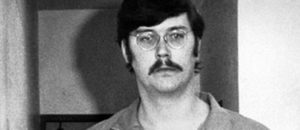Tommy Lynn Sells – Livingston, Texas

Tommy Lynn Sells was an American serial killer active primarily during the 1980s and 1990s, known for claiming dozens of victims and being convicted of multiple brutal murders. His crimes spanned several states and drew sustained media and law-enforcement attention before his execution by the state of Texas in 2014.
Key Facts
- Tommy Lynn Sells claimed responsibility for dozens of killings, though the exact number of victims he admitted to exceeds what was officially proven.
- He was convicted of multiple murders and linked to violent homicides in several U.S. states.
- Law enforcement captured Sells after an attack in which a child survivor provided identifying information to police.
- He received a death sentence in Texas following his conviction for particularly brutal crimes.
- Sells was executed by the state of Texas in 2014.
- Many of his crimes involved stabbing and other close-contact violence, often described as frenzied or opportunistic by investigators.
- His known period of violent activity spans from the mid-1980s through the late 1990s.
- Incidents attributed to him occurred across multiple states, complicating investigations and victim accounting.
- Investigators and commentators have noted a history of transience, substance abuse, and unstable relationships in his background.
- Media coverage emphasized both the brutality of his offenses and the challenges of linking him conclusively to every claim he made.
Crimes and Victims
Sells’s criminal record includes convictions for several homicides and credible links to other unsolved killings. Many of the documented crimes involved close-range attacks, frequently using a knife, and left victims with severe injuries.
Victims ranged in age and background, and some assaults were apparently opportunistic rather than premeditated. The scattered geographic pattern of the incidents required investigators from multiple jurisdictions to coordinate evidence and witness accounts.
He sometimes confessed to additional murders beyond those officially credited to him, but authorities treated such claims cautiously, seeking corroborating physical or testimonial evidence. This mixture of confessions and confirmed convictions created ongoing debate about the total scope of his violence.
Capture and Trial
The arrest that led to Sells’s long-term detention followed an assault in which a young survivor was able to alert others and provide a description to police. That eyewitness information played a pivotal role in identifying and apprehending him.
During trials, prosecutors emphasized the severity and brutality of the attacks, presenting forensic details and witness testimony to secure convictions. Defense strategies included appeals to mental health and substance-abuse histories, but courts ultimately imposed the harshest penalties available in the most serious cases.
Sells faced proceedings in multiple jurisdictions, and coordination between states affected how evidence was compiled and presented. The legal process culminated in a death sentence in Texas, which was carried out in 2014 after appeals were exhausted.
Psychology and Motives
Analyses by professionals and observers suggest Sells exhibited impulsive, violent behavior with elements of disorganized, opportunistic offending. His statements to police and interviewers often mixed contradictory claims, complicating efforts to analyze a single coherent motive.
Substance abuse, transient living, and reported mental-health problems were recurring themes in evaluations of his life and crimes. Experts who reviewed his case noted that these factors likely influenced his decision-making and impulsivity, though definitive motives for individual crimes remained unclear.
Because some confessions lacked independent corroboration, researchers and investigators have treated his self-reports with caution when attempting to construct a psychological profile. The combination of violent acts, inconsistent claims, and chaotic life circumstances made a precise motive difficult to establish.
Background / Early Life
Sells had a troubled and unstable upbringing marked by frequent moves, family difficulties, and early exposure to substance use. Biographical accounts record periods of homelessness and transient employment that complicated efforts to create a stable life trajectory.
He experienced brushes with the criminal justice system before the series of violent crimes that brought him national attention, and these earlier incidents included property offenses and assaults. Several observers link his later escalation to more serious violence with cumulative personal instability and substance dependence.
Attempts to trace a single causal chain from childhood events to his later crimes are limited by gaps in records and inconsistent self-reporting. Nonetheless, the available information points to long-standing social and psychological instability prior to the known period of homicide activity.
Legacy and Media Coverage
Sells’s case attracted extensive media attention due to the brutality of convicted offenses and his own public confessions to additional killings. Coverage often highlighted both the horror of individual crimes and the broader challenges of investigating a mobile offender across state lines.
His claims of numerous victims sparked investigative follow-ups in multiple jurisdictions, some of which remain unresolved or inconclusive. Journalists, true-crime authors, and documentary producers have continued to revisit the case, debating the credibility of his confessions and the adequacy of interagency responses.
The case also prompted discussions about how law enforcement tracks transient offenders, the role of mental-health and addiction services in prevention, and the limits of confession-based investigation. As a result, Sells’s crimes remain a reference point in conversations about serial offending and cross-jurisdictional cooperation.



